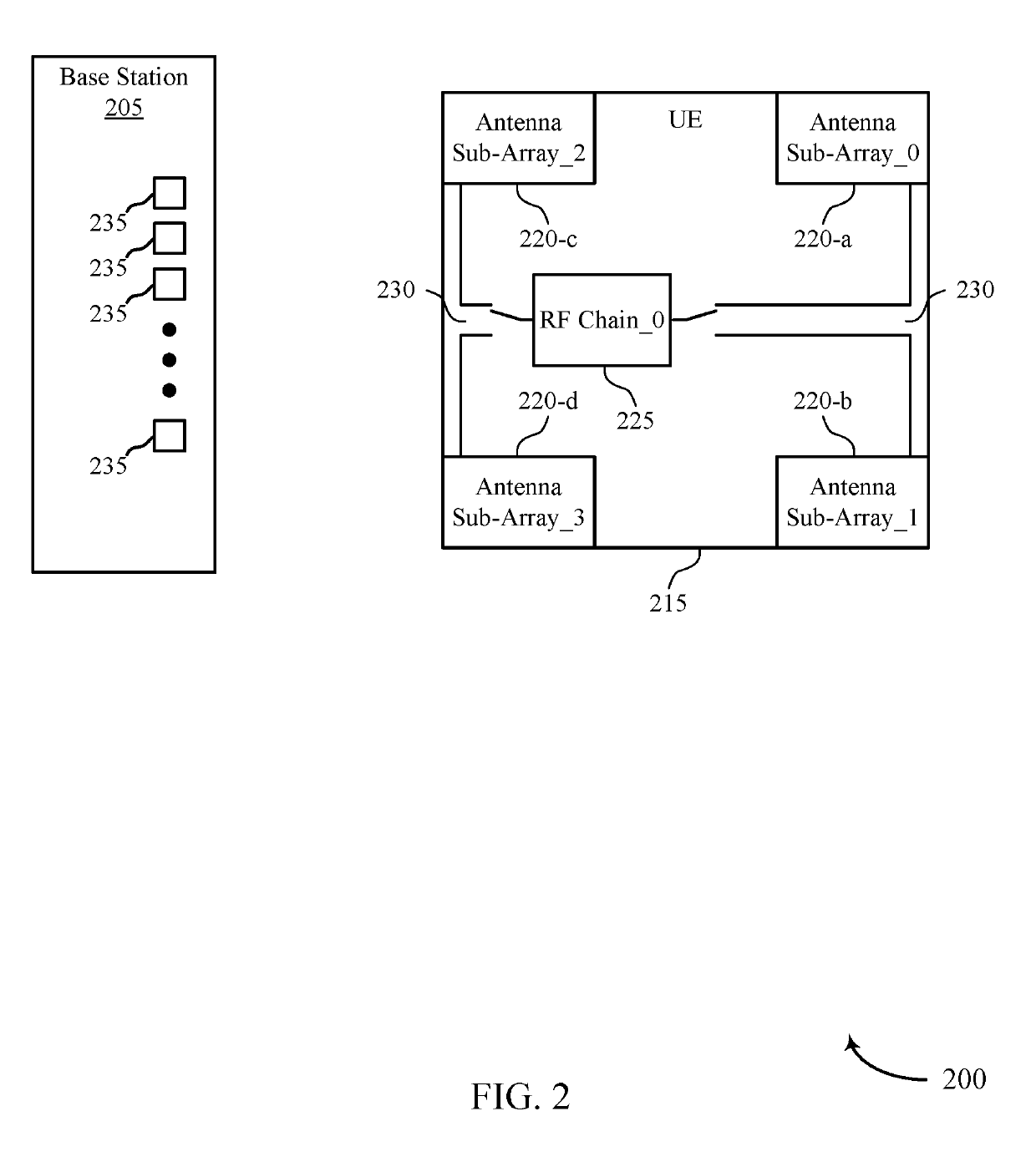Techniques for selecting an antenna sub-array at a user equipment
a technology of user equipment and antenna sub-array, which is applied in the field of wireless communication systems to achieve the effects of reducing the acquisition time of network associated data, reducing the acquisition time, and increasing the reliability
- Summary
- Abstract
- Description
- Claims
- Application Information
AI Technical Summary
Benefits of technology
Problems solved by technology
Method used
Image
Examples
Embodiment Construction
[0043]A wireless communication system (e.g., a mmW system) may utilize directional or beamformed transmissions (e.g., beams) for communication. For example, a base station may transmit signals on multiple beams associated with different directions. In some cases, the base station may engage in beam sweeping over a portion (or all) of the possible beams for transmitting messages or signals intended for UEs distributed throughout a coverage area of the base station. For example, a base station may transmit a discovery reference signal (DRS), synchronization channel, measurement reference signal (MRS), beam training sequence (BTS), or other signal on a plurality of beams. A UE that receives one of these signals may acquire a network associated with the base station. Techniques described in the present disclosure may be used to select an antenna sub-array at a UE for communicating with a base station.
[0044]The following description provides examples, and is not limiting of the scope, ap...
PUM
 Login to View More
Login to View More Abstract
Description
Claims
Application Information
 Login to View More
Login to View More - R&D
- Intellectual Property
- Life Sciences
- Materials
- Tech Scout
- Unparalleled Data Quality
- Higher Quality Content
- 60% Fewer Hallucinations
Browse by: Latest US Patents, China's latest patents, Technical Efficacy Thesaurus, Application Domain, Technology Topic, Popular Technical Reports.
© 2025 PatSnap. All rights reserved.Legal|Privacy policy|Modern Slavery Act Transparency Statement|Sitemap|About US| Contact US: help@patsnap.com



